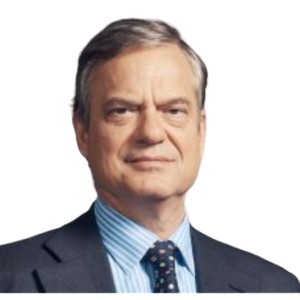US Economy’s Strength Complicates Fed’s Path on Rates
Stronger-than-expected growth and persistent inflation cast doubt on further easing, raising tensions with Trump and investors. A commentary by Lorenzo Bini Smaghi

“We economists should look ourselves in the mirror,” admitted the chief economist of a leading US investment fund in a recent note. “We have been wrong for nine months” — above all in predicting a recession that has stubbornly failed to materialise.
Revised figures for the second quarter show US annualised growth at 3.8 per cent, while early estimates from the Atlanta Fed suggest output could climb to 3.9 per cent in the third quarter. Far from succumbing to Trump’s protectionist trade measures, the American economy appears remarkably resilient.
The probability of recession has been cut by major investment banks to below 20 per cent. The slowdown in job creation seems to reflect falling immigration rather than weakening demand. Consumption and investment in new technologies remain robust.
This strength, however, complicates the Federal Reserve’s task. After September’s quarter-point cut, markets were expecting at least two more reductions by year-end, with the possibility of further easing in early 2026. Yet a resilient economy with inflation still well above 2 per cent gives little justification for further cuts — if anything, the case for renewed tightening is stronger.
Looser monetary conditions risk fuelling renewed inflation, particularly as the weaker dollar adds to import prices. Such a shift in policy would inevitably clash with Donald Trump, who continues to demand lower interest rates to stimulate growth. His effort to force out Fed governor Lisa Cook has so far been blocked by the Supreme Court, but political pressure remains high.
Financial markets add a further complication. Equity indices have reached record levels on expectations of cheaper money. A hawkish shift in rate expectations could trigger a sharp correction.
Caution is therefore warranted. As Keynes observed, changing one’s mind when facts change is wise — but doing so too often can undermine credibility. Many of the upbeat data points still refer to the second quarter, before tariffs announced in August began to take effect. More recent trade data already show a decline in US imports from Europe, while consumer confidence surveys have weakened sharply. The government shutdown will further dampen sentiment.
Behind the headline resilience lies a widening divergence. Lower-income households — many of them Trump’s supporters — face deteriorating conditions, while wealthier groups benefit from buoyant equity markets and tax cuts. The technology sector and globally oriented firms continue to thrive, while more traditional industries struggle. How long such divergences can sustain aggregate growth remains uncertain.
Bond markets remain wary. Yields on 10-year Treasuries have risen 20 basis points over the past year, and 30-year yields by 50 basis points. Investors are signalling that inflation and the relentless rise of US public debt remain the economy’s most pressing vulnerabilities.
A first version of this article was published in the Italian daily Il Foglio
IEP@BU does not express opinions of its own. The opinions expressed in this publication are those of the authors. Any errors or omissions are the responsibility of the authors.
